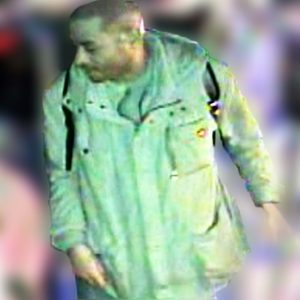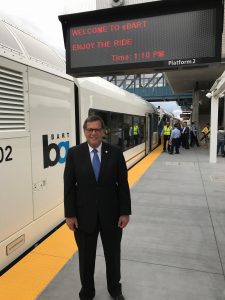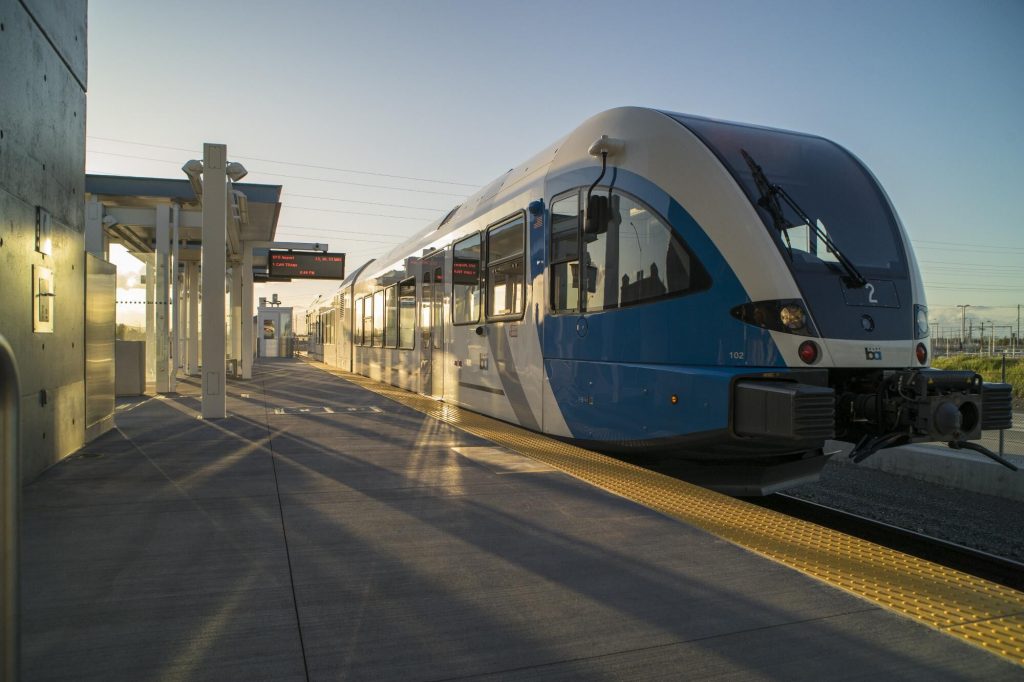BART Board approves $2.3 billion budget prioritizing safety and quality of life
Tuesday, June 18th, 2019 Will hire 19 more police officers, four fare inspectors
Will hire 19 more police officers, four fare inspectors
The BART Board of Directors has approved a $2.3 billion budget for Fiscal Year 2020 (FY20) which begins July 1, 2019. The budget focuses on expanding and investing in Quality of Life issues, including the addition of 19 police officers and four unarmed fare inspectors.
“This budget is designed to make BART safer,” said BART Board President Bevan Dufty. “Adding officers and establishing a community ambassador program shows our riders that we’ve heard their concerns and we’ve taken action.”
Quality of Life
Including funds added in FY20, since FY14 BART has spent $59 million on new budget initiatives addressing Quality of Life challenges in the areas of safety, fare evasion prevention, cleanliness and homelessness. The FY20 budget supplements and continues Quality of Life initiatives added in prior years. Among the highlights:
- $2.1 million towards 19 additional police officers.
- $500,000 to fund four additional fare inspectors.
- $2 million to continue funding efforts to address the impacts of regional homelessness in the BART system, including outreach programs, elevator attendants and Pit Stop restrooms.
- BART station hardening efforts are incorporated into many projects and programs throughout the District, using operating and capital funds. In FY20, $2.4 million of new and ongoing funds ($400,000 of new FY20 operating funds augments $600,000 of prior year parking revenue held in reserves and $1.3 million of capital staffing) will support station hardening projects, including raising railings and securing swing gates. Additionally, BART directs grant funds to station hardening, including federal formula funds for the fare gate modification program and often redirects existing engineering and maintenance staff to projects such as the fare gate cinch modification program as well as the camera upgrade program. BART’s Station Modernization Program also incorporates elements of station hardening in design, guided by the BART Facilities Standards. Six stations in the Station Modernization Program are spending or will spend a combined $16 million on station hardening elements. In addition, the $61 million Market Street Escalator Canopies project includes installing roll-up grilles at the street level, security cameras and handrail lighting. In summary, station hardening is a substantial, multi-year systemwide effort, leveraging new and existing operating and capital funds from a variety of sources into a wide range of projects.
System reinvestment
The new budget dedicates $1.4 billion for capital programs, a 5% increase from FY19 with the largest portion (46%) coming from Measure RR funds. The use of Measure RR funding for FY20 is increasing as projects anticipate moving from design and pre-engineering to construction. Most of the capital budget (69%) is directed to reinvestment in the system. The use of previously awarded and current federal funds has increased as BART ramps up on train control modernization, state of good repair projects and continues the delivery of new rail cars. FY20 projects include:
- $101 million for station modernization and elevator/escalator improvements across the system, including replacement of escalators at downtown San Francisco stations, and station modernization efforts at El Cerrito Del Norte, 19th Street, Downtown Berkeley, Concord, Powell, and Pittsburg/Bay Point stations. The station modernization program also includes many elements of station hardening.
- $303 million is budgeted for expenses related to the procurement of 775 new rail cars
- $151 million towards the continuation of a multi-year program of traction power infrastructure replacement, including replacement of traction power cables in San Francisco and in Alameda County.
- $71 million towards the Hayward Maintenance Complex, a modern facility to maintain the new rail cars.
- $86 million for planning and engineering for the Train Control Modernization Program and for renewing components of the existing train control system, including transformers, switch machines and speed encoding equipment at stations.
- Fare changes
- A 5.4% inflation-based fare increase will take effect on January 1, 2020 as part of a program first approved by the BART Board in 2003 and renewed for a second series in 2013. This is the last of four biennial fare increases called for under the 2013 series. The BART Board also approved a third series of inflation-based fare increases that will go into effect in 2022, 2024 and 2026. This latest series will follow the same inflation-based formula as the previous increases.
- BART will participate in the Metropolitan Transportation Commission’s Regional Means-Based Fare Discount Pilot Program. The program will offer a 20% discount per trip to adult riders earning 200% or less of the federal poverty level. The FY20 budget assumes one-half year of the pilot with an estimated revenue loss of $2 million after the MTC’s estimated offsetting annual contribution to BART of approximately $2 million.
Revenue and ridership challenges
The FY20 budget is balanced and includes $17 million in budget cuts made by all departments in the district.
Fare revenue is BART’s largest source of revenue, with $479 million of rail fare revenue forecast in FY20, a decrease of $5.6 million from FY19, reflecting a lower ridership forecast. Other operating revenue is forecast to be $10 million lower due to one-time revenues in FY19 not budgeted in FY20. These decreases are offset by increases in financial assistance, particularly sales taxes. Sales taxes are BART’s largest form of financial assistance budgeted at $277 million for FY20 a 3.2% growth over FY19
We take a conservative approach to projecting ridership for our FY20 budget. We are concerned about the length of this current economic expansion and the potential for a downturn in the future, which could impact ridership.
Service improvements
The budget includes funding for service enhancements that will ease crowding. Most notably, by February of 2020 we expect to have 160 Fleet of the Future train cars which will allow us to run all 10-car trains on the four Transbay routes. As we increase the number of Fleet of the Future cars, we will begin retiring legacy cars, which should increase reliability and reduce maintenance costs.
Silicon Valley Berryessa Extension fares
Along with approving the FY20 budget, the BART Board of Directors voted unanimously to establish a fare structure for the Silicon Valley Berryessa Extension. BART’s existing distance-based fare structure will be used to calculate trip fares on the 10-mile extension from the Warm Springs/South Fremont Station to Berryessa Road in San Jose. This is in accordance with the comprehensive agreement between BART and the Valley Transportation Authority. The extension includes stops in Milpitas and Berryessa/North San Jose.
Ambassador program
Though not part of the FY20 budget, $500,000 in additional anticipated revenue from the FY19 budget will be set aside to fund an ambassador pilot program. BART is in talks with the Metropolitan Transportation Commission to seek matching funds for the program.











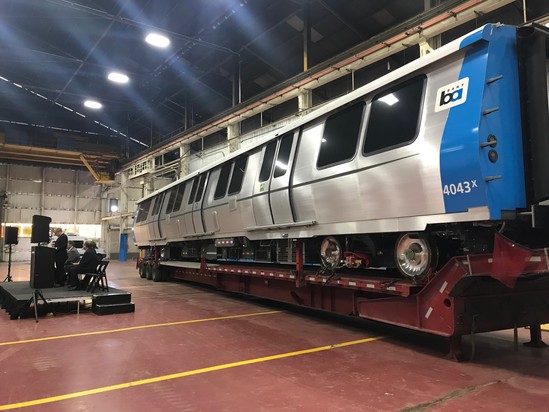

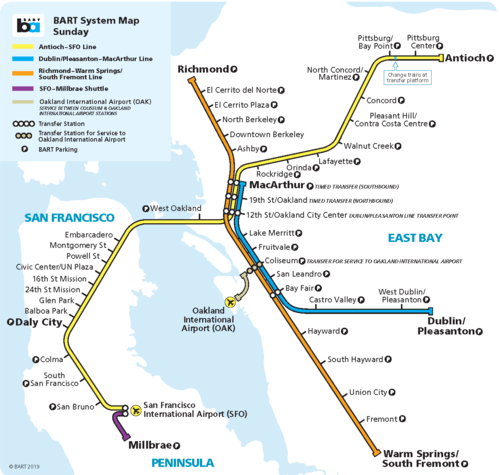


 The BART Police Department is releasing new information about the killing of 19-year-old Carlos Funez-Romero, who was fatally shot aboard a BART train stopped at the West Oakland Station on January 9, 2016. The department is also announcing the reward for information leading to the arrest of the suspect is being increased from $10,000 to $25,000. (See
The BART Police Department is releasing new information about the killing of 19-year-old Carlos Funez-Romero, who was fatally shot aboard a BART train stopped at the West Oakland Station on January 9, 2016. The department is also announcing the reward for information leading to the arrest of the suspect is being increased from $10,000 to $25,000. (See 